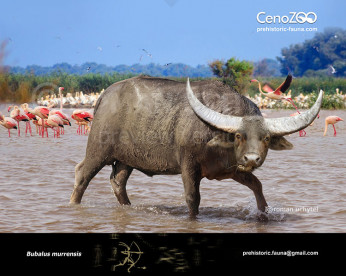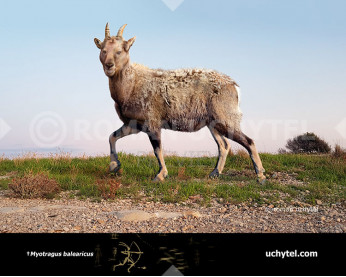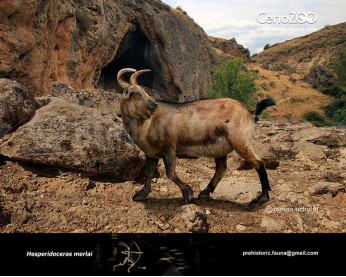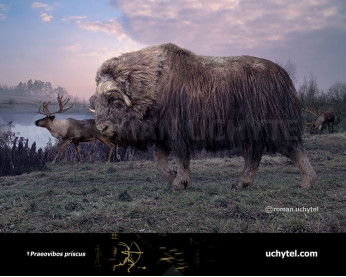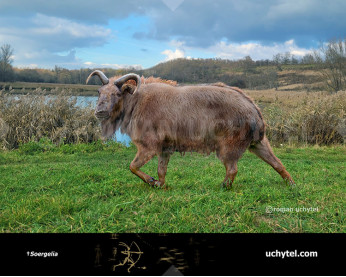Tsaidamotherium
530530
Tsaidamotherium (†Tsaidamotherium (Bohlin, 1935))
Order: Artiodactyla
Family: Bovidae
Subfamily: Caprinae
Temporal range: during the Late Miocene of Northwestern China (Tibetan Plateau)
A typical representative: Tsaidamotherium hedini (Bohlin, 1935)
The anatomy of Tsaidamotherium, suggests that the living animals lived in comparatively cold environments. It is probable that animals had adapted to living in mountainous areas that had formed during a phase of tectonic uplift in Northwestern China at the beginning of the Late Miocene. During the late Miocene, the remains of the fossil horse Hipparion suggests that the Linxia and Qaidam basins were semi-arid savanna environments.
The skulls of both species had large nasal cavities, suggesting the living animals had broad, vaulted muzzles like those of the takin. The right horn core of T. hedini is tall and conical, suggesting the right horn would have resembled a Phrygian cap. In T. brevirostrum, the right horn corn is much shorter and flatter, suggesting the right horn would have appeared squashed or flattened in comparison.
The closest living relative of Tsaidamotherium is probably the muskox, Ovibos moschatus.
Оплата
У Вас є кілька зручних способів купівлі зображення: кредитна чи дебетова картка Visa, Mastercard, Maestro; PayPal або банківський переказ
Tsaidamotherium (†Tsaidamotherium (Bohlin, 1935))
Order: Artiodactyla
Family: Bovidae
Subfamily: Caprinae
Temporal range: during the Late Miocene of Northwestern China (Tibetan Plateau)
A typical representative: Tsaidamotherium hedini (Bohlin, 1935)
The anatomy of Tsaidamotherium, suggests that the living animals lived in comparatively cold environments. It is probable that animals had adapted to living in mountainous areas that had formed during a phase of tectonic uplift in Northwestern China at the beginning of the Late Miocene. During the late Miocene, the remains of the fossil horse Hipparion suggests that the Linxia and Qaidam basins were semi-arid savanna environments.
The skulls of both species had large nasal cavities, suggesting the living animals had broad, vaulted muzzles like those of the takin. The right horn core of T. hedini is tall and conical, suggesting the right horn would have resembled a Phrygian cap. In T. brevirostrum, the right horn corn is much shorter and flatter, suggesting the right horn would have appeared squashed or flattened in comparison.
The closest living relative of Tsaidamotherium is probably the muskox, Ovibos moschatus.

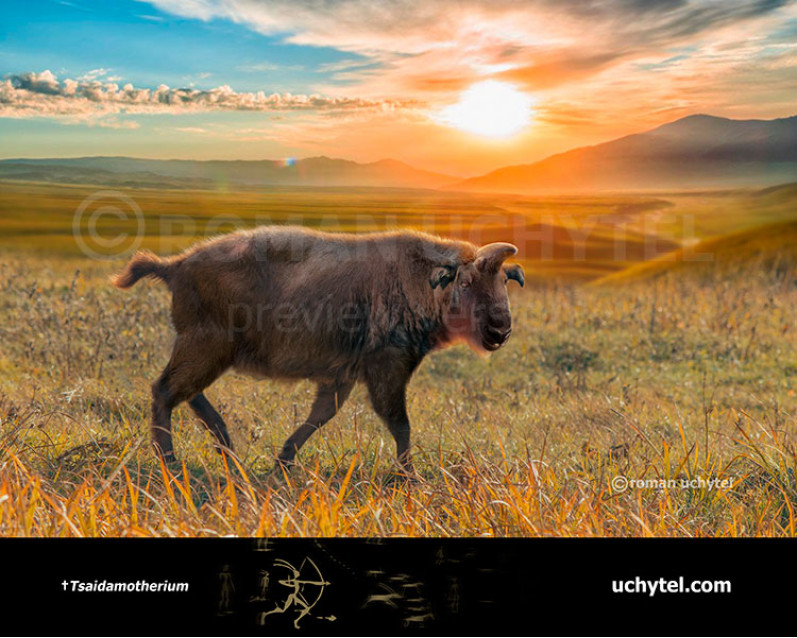
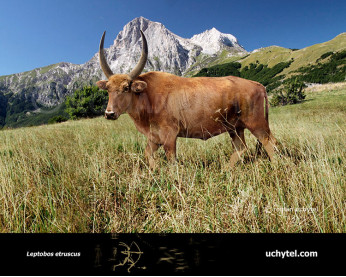
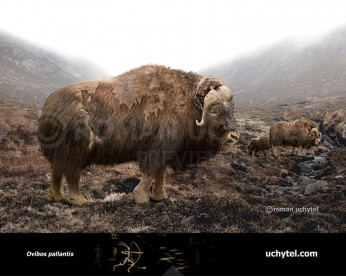
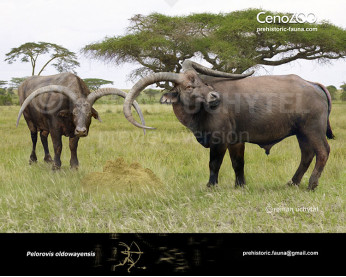
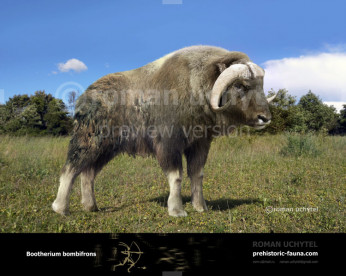
-346x277.jpg)
